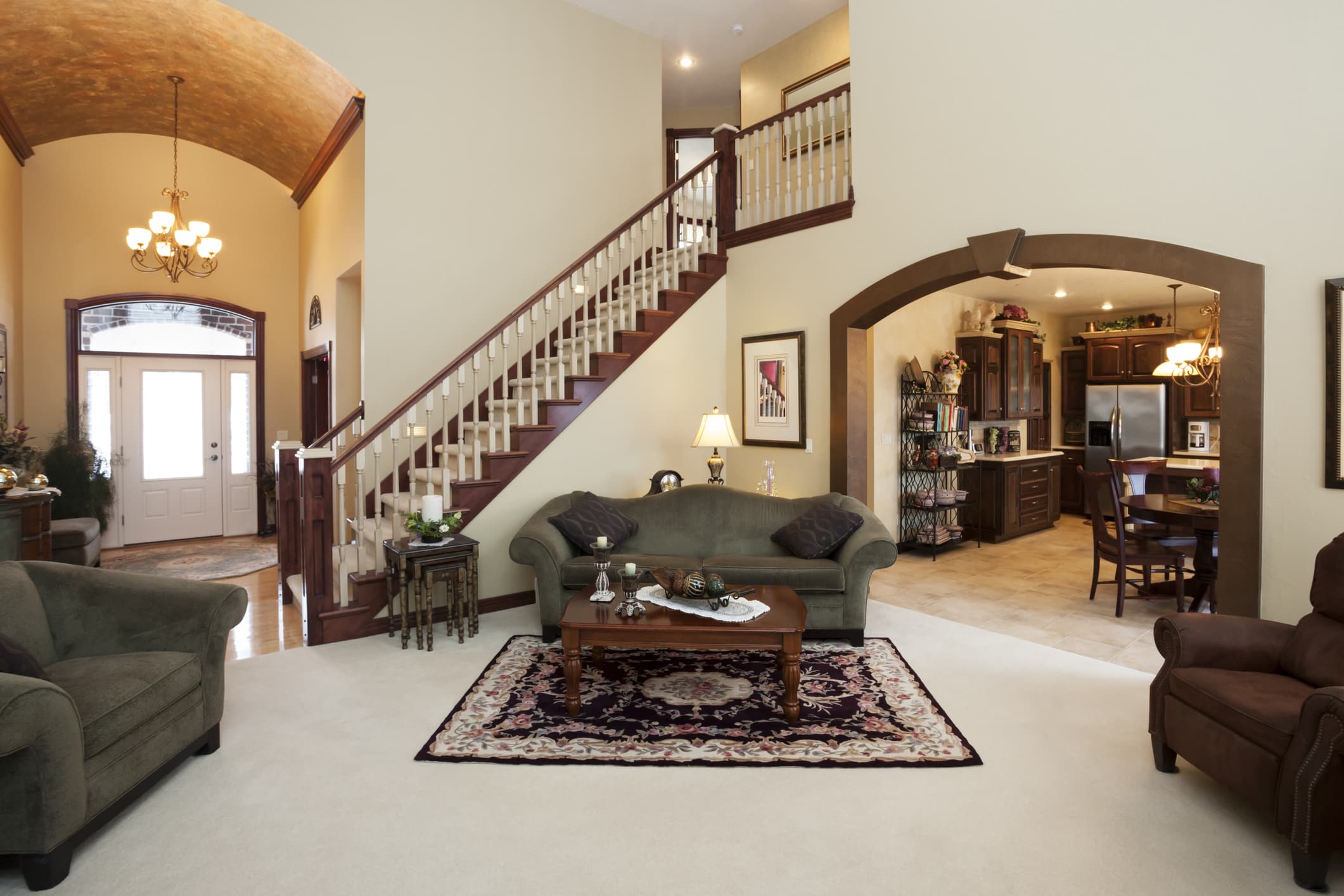
High ceilings open up the interior of a house, making rooms feel more expansive. This perception also adds market value and saleability to the home: Rooms with a ceiling above the standard eight-foot height always get prominent mention in real estate listings. But what about heating and cooling? Here are some reasons vaulted ceilings may impact home energy efficiency:
- Heat produced by a furnace always rises. In a room with a high ceiling, the increased overhead space accumulates more heat near the ceiling. During winter, this room may feel more chilly than a standard room. Bumping thermostat settings higher to compensate makes the furnace run more often and longer, boosting heating costs.
- Temperature control in rooms with high ceilings may be difficult in summer too. Because the higher overhead space contains more air volume than a room with a standard ceiling, the air conditioner runs longer to cool the increased square footage. Extended A/C cycles mean higher monthly cooling costs.
To support optimum efficiency inside a house with high ceilings, a qualified heating and air contractor can discuss suggestions that include:
- Installing a ceiling fan. The slow-moving, rotating blades of a ceiling fan continuously redistribute air trapped near the ceiling down to floor level. This keeps rooms with higher ceilings more comfortable — without working your system overtime.
- Checking proper HVAC sizing. System “sizing” means matching the BTU capacity of the unit to the square footage of the home. An HVAC System sized for standard ceilings may have insufficient capacity, run longer cycles and cost more to operate if the house includes one or more rooms with high ceilings. Upgrading to a unit with increased BTU capacity may be required for optimum efficiency.
- Running the system fan. The HVAC blower is typically set to turn off automatically when the furnace or air conditioner cycles off. Switching the fan setting from “Auto” to “On” keeps the fan running. Continuous circulation mixes air throughout the house more effectively, making temperature control in all rooms more consistent. Keep in mind this may not be the most cost efficient way to operate your system.
For more answers to questions about high ceilings and HVAC efficiency, contact the professionals at Jackson & Sons.